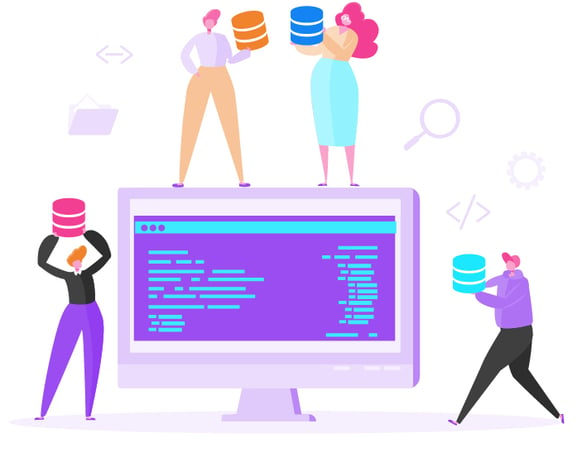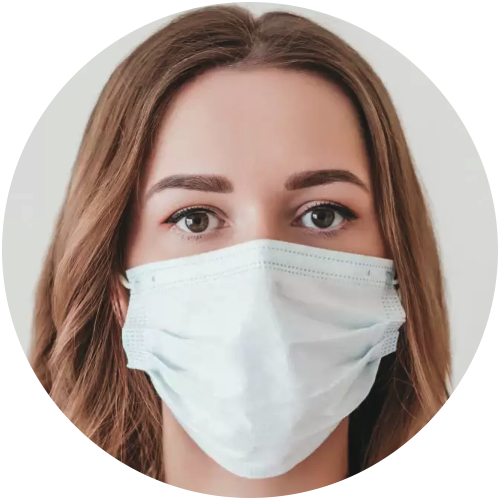Siloed systems impede enterprise data management. An operational data fabric is the best way to stitch current siloed systems together, and retire legacy ones.
Table of Contents
Siloed Systems: A Challenge for the Enterprise
Data Fabric: The Solution to the Siloed Systems Challenge
Greater Accessibility
Improved Data Security Against Ransomware
Faster and More Reliable Data-Driven Insights
K2View Data Fabric Connects and Retires Siloed Systems
Siloed Systems: A Challenge for the Enterprise
Efficient data management is a necessity for data-driven enterprises. It allows companies to leverage data to operate the business at its maximum potential. However, countless enterprises are not fully benefitting from their data. According to a report by 451 Research, 25% of organizations have more than 50 unique data silos, and these prevent companies from harnessing their data for their business.
Siloed system were not designed to share or exchange their stored data with other systems. Often, data silos are created when companies use legacy systems without stockpiling their resources in a centralized database. This can result in multiple problems, like unnecessary file duplication, redundant job roles, and bottlenecks within departments.
Data fabric interconnects data from siloed systems, while governing and preparing the connected data for simple, quick, and safe access to consuming applications and data stores. A data fabric can also operate as a database, allowing companies to build modern applications on top and gradually retire the legacy siloes.

Data Fabric: The Solution to the Siloed Systems Challenge
Data fabric is an overarching layer of data that connects between multiple source and target systems. Our article “Data Fabric vs. Data Lake vs. Database” highlights that it does so regardless of technology, format, or location – meaning it can connect siloed systems to modern cloud applications, data lakes, and data warehouses. Essentially, data fabric is a means of building an interconnected data web that's easily manageable, and scalable.
Moreover, once a data fabric becomes the system of record at an enterprise, it can be used to retire legacy siloed systems most effectively. The rest of this article explains how.
Greater Accessibility
The biggest problem with siloed systems is their lack of interoperability. However, by implementing data fabric, data consumers, across all departments, gain secured access to connected data that is always fresh. This allows for better, faster time to insights and data-driven decisioning.
In the healthcare sector, enterprise data accessibility is crucial. Researchers from the University of Pennsylvania recently published a study entitled “Data silos are undermining drug development and failing rare disease patients”, citing the fragmented nature of research data, primarily due to disconnected data silos. It then goes on to explain the critical need for more accessible data within healthcare providers.

Improved Data Security Against Ransomware
Siloed systems are vulnerable to cyber threats, such as ransomware, because a single breach into a legacy application can expose all the data in that system. An operational data fabric stores an individual business entity’s data in a single micro-database. Because each micro-DB is uniquely encrypted, a single breach might reveal the data of one business entity (e.g., a customer, product, place, etc.) but can never compromise all the data in the organization.
Faster and More Reliable Data-Driven Insights
A secure, interconnected data fabric enables organizations to minimize data preparation time and effort for data science teams. It allows for faster time to trusted insights, which leads to better business.
According to University Business's feature on data silos, multiple issues stem from the inability to effectively analyze institutional data stored in siloed systems. It asserts that missed opportunities arise when different departments collect various sets of data in different ways, making data analysis difficult, or even impossible. If all educational data were made accessible to all educators and administrators, the result would be more synchronized data analysis, and better informed decisions.
K2View Data Fabric Connects and Retires Siloed Systems
Data silos prevent enterprises from getting a full 360 view of their data. Fortunately, data fabric architecture offers a robust solution to this problem. When fully implemented, a business entity-based data fabric serves as the foundation for interconnecting current siloed systems and eventually retiring legacy siloed systems. This has been field-proven in some of the largest enterprises in the world.













